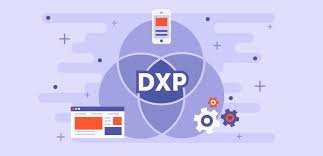As businesses accelerate their digital transformation agendas, the ability to deliver personalized, seamless customer experiences has become a critical differentiator. Today’s customers expect more than transactions—they demand relevance, speed, and consistency across every touchpoint.
Enter the Digital Experience Platform (DXP): a strategic technology investment that enables companies to create, manage, and optimize cohesive digital experiences across channels, devices, and user journeys.
In essence, a DXP serves as the digital foundation that supports personalized engagement at scale—integrating content, data, and analytics into a unified experience delivery engine.
Why DXPs Matter: Strategic Business Drivers
Organizations are turning to DXPs to solve key challenges and capture high-value opportunities:
- Customer Expectations Are Evolving: Omnichannel, real-time engagement is now standard.
- Data Silos Impede Personalization: Unified platforms enable richer, more informed interactions.
- Content Volumes Are Exploding: DXPs streamline governance and accelerate go-to-market.
- Revenue Is Experience-Driven: Better experiences correlate directly with higher customer lifetime value (CLV) and conversion rates.
Core Functionalities That Enable Business Growth
- Content Management at Scale
Enables centralized creation and distribution of content across digital assets—reducing redundancy and ensuring brand consistency. - Asset and Data Unification
Integrates content libraries, customer data, and brand assets—creating a single source of truth for digital operations. - Personalization Engines
Delivers targeted experiences by leveraging behavioral insights, location, and customer profiles—boosting relevance and engagement. - E-Commerce Integration
Supports seamless digital storefronts and transactional journeys—improving conversion rates and simplifying user flows. - Analytics & Experience Optimization
Captures real-time data to inform content strategy, UX design, and product placement decisions. - Customer Data Integration (CDP)
Consolidates fragmented data across CRM, ERP, and marketing systems—powering 360-degree customer understanding. - Multi-Channel Delivery
Enables consistent experiences across websites, mobile apps, kiosks, social platforms, and IoT interfaces. - System Interoperability
Connects with legacy infrastructure and cloud-native stacks to support both modernization and transformation.
Top DXPs in 2025: Business-Focused Market Leaders
The following platforms have demonstrated strong enterprise adoption, ecosystem maturity, and measurable ROI:
| Platform | Key Strengths |
| Adobe Experience Cloud | Comprehensive suite with leading tools for content, personalization, and AI. |
| Salesforce Experience Cloud | Seamless CRM integration and journey mapping capabilities. |
| Sitecore Experience Platform | Unified platform combining content, commerce, and data insights. |
| Optimizely One | Focus on experimentation and continuous UX improvement. |
| Bloomreach | AI-powered commerce and personalized search optimization. |
| Kentico Xperience 13 | Hybrid headless delivery for flexible architecture and channel agility. |
| Liferay DXP | Enterprise-grade integration for portals and B2B scenarios. |
| Crownpeak DXP | Agile deployment, with strong compliance and speed-to-market focus. |
| Pimcore | Open-source flexibility with built-in PIM and DAM capabilities. |
| Progress Sitefinity | Marketing-friendly UX and robust content workflows. |
Strategic Considerations for Business Leaders
To realize full business value from a DXP, decision-makers should evaluate solutions across the following dimensions:
1. Customer Experience Vision
Does the DXP align with your brand’s experience strategy and personalization roadmap?
2. Digital Ecosystem Fit
Can it integrate with existing tools (CRM, CMS, ERP, CDP), reducing silos and tech debt?
3. Operational Agility
Will it empower non-technical users, accelerate campaign launches, and support cross-functional workflows?
4. Scalability & Future-Readiness
Is it architected to scale across new markets, channels, and business units?
5. Data & Analytics Maturity
Does it offer real-time insights to optimize spend, improve targeting, and drive better business decisions?
Conclusion: A Strategic Lever for Customer-Centric Growth
Digital Experience Platforms are more than IT investments—they are enablers of customer-centric business models, agile marketing operations, and measurable growth outcomes. For organizations navigating digital disruption, a well-implemented DXP becomes a unifying layer between content, data, and customer value.
The competitive edge in 2025 will belong to businesses that view digital experience not as a feature—but as a differentiator embedded across their operating model.

